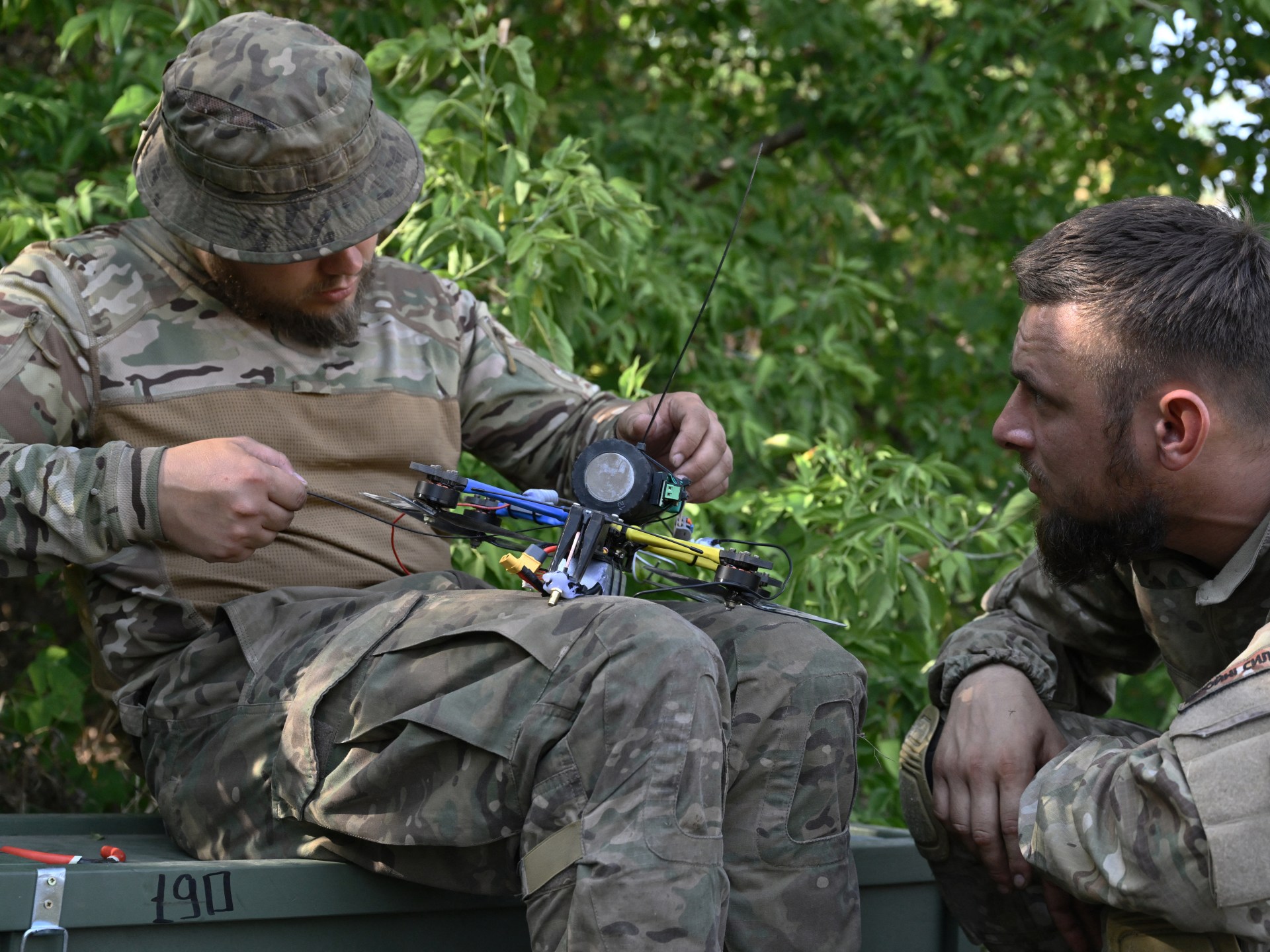
Ukraine is adding little-known incendiary weapons to its armoury in its battle to fend off the ongoing Russian invasion, including “fire-spitting” drones reminiscent of dragons.
On Wednesday, Ukraine’s Defence Ministry posted videos on the social media platform X showing a Ukrainian drone raining down what appeared to be fire – but was molten metal – on forested positions presumed to be hiding Russian units.
“A ‘dragon drone’ in the direction of Kharkiv”, the post from the ministry read, referring to Ukraine’s second-largest city, which has been the target of repeated Russian bombing.
A “dragon drone” in the Kharkiv direction.
📹: 42nd Mechanized Brigade pic.twitter.com/4M1qAJdx3o
— Defense of Ukraine (@DefenceU) September 4, 2024
Analysts say the weapon is a new and innovative introduction of an age-old weapon into the strategy of a Ukrainian military that has shown its growing proficiency in using small drones. Here’s what to know about the new “dragon drones”:
What are ‘dragon drones’ made of?
Dragon drones carry a substance called thermite. The mixture is made from metal powder – most often aluminium – and powdered iron oxide or rust.
Thermite is not explosive, but generates heat at such extreme temperatures – more than 2,200 degrees Celsius (4,000 degrees Fahrenheit) – that it burns through and damages nearly any material – clothing, trees and foliage, even military-grade vehicles. It can also burn underwater.
Used on humans, the weapon could be fatal, or cause extensive burns and bone damage. It could also lead to respiratory issues and psychological trauma for survivors.
Combining thermite with high-precision drones that can bypass traditional defences makes dragon drones “highly effective” and “dangerous”, according to the United Kingdom-based anti-war advocacy organisation Action on Armed Violence (AOAV).
Dragon drones tend to be low-flying because thermite is more effective when it’s in close contact with the target. Aside from delivering significant damage on their own, the weapons are also likely aiding Ukrainian units with reconnaissance missions. With foliage cover burned off, follow-up bombing campaigns are likely to be more precise, analysts say.
Some of the drones are believed to be developed by Ukrainian startup Steel Hornets, a private unmanned weapons systems manufacturer. The company’s thermite offerings include a light weapon it claims can burn through 4mm metal in under 10 seconds.
The United States military also produces thermite grenades, but though Washington is a principal supplier of weapons to Ukraine, it is unclear if the US supplies thermite-grade weapons to Kyiv.
Is using thermite legal?
Thermite’s destructive effects are similar to those of other incendiary substances like white phosphorus and napalm, designed to cause damage through burn or respiratory injury.
It’s not illegal to use weapons like dragon drones on military targets in warfare. However, it’s against international law to use incendiary weapons on civilians. It’s also illegal to use them on military targets inside populated areas, or on forested areas – unless the green cover is believed to be hiding military objects.
In general, the use of these substances is discouraged because the fires they produce are hard to contain, and they could affect civilians while also causing massive environmental damage, according to the United Nations Office for Disarmament Affairs.
Ukrainian units have so far used thermite on military targets, AOAV notes.
Russian units also appear to have used the substance. It was possibly used in March 2023 on civilian targets in the eastern Ukraine town of Vuhledar, according to the AOAV.
Thermite bombs are “particularly dangerous” because their effects are hard to contain, even when targeting military positions, unlike conventional weapons, the AOAV said, warning that thermite’s use should be discontinued.
“The widespread use of thermite bombs increases the likelihood of these weapons being deployed in populated areas,” AOAV director Iain Overton said in a statement. “The result could be catastrophic, with horrific injuries and loss of life among civilians.”
🔥Examples of the use of thermite projectiles from the “birds of Madyar”☠️#UkraineWar #UkraineRussianWar #UkraineWarNews pic.twitter.com/o2oGkniZqV
— ✝ ⚔️ Hunter UA ✠ 🇺🇸🇺🇦 (@UaCoins) February 10, 2024
Has thermite been used in weapons in the past?
Yes – this is not the first time countries at war are using the substance.
German zeppelins dropped thermite-laden bombs during World War I. The air raids were regarded as an innovation at the time. They also often missed their targets and caused significant civilian casualties.
During World War II, Germany as well as the Allies used thermite aerial bombs to destroy each other’s military vehicles.
The substance was discovered by German chemist Hans Goldschmidt in 1893 and patented in 1895. Its earliest commercial use was in the German town of Essen where construction workers used thermite to weld tram tracks.
Are dragon drones really significant as weapons?
Fear of liquid fire falling from the sky at any moment is likely going to cause more psychological damage to the enemy than physical destruction, some experts say.
Recently, a new development in drone warfare has been sighted – the so-called Dragon drones.
Ukrainian drones are pouring thermite on Russian positions. This is something different from FPVs and bombers, and from a psychological viewpoint rather terrifying. 1/🧵 pic.twitter.com/MB48apP8JM
— Emil Kastehelmi (@emilkastehelmi) September 6, 2024
“This is a new twist to the fear of drones,” Finland-based military history expert Emil Kastehelmi posted on X, adding that its effects are “terrifying”.
“Imagine: out of nowhere, fire starts raining down from the sky, and there’s nothing you can do to stop it. You can’t put it out with water. Your comrades are screaming, caught in flames, like human torches.”
However, Ukraine appears to have limited thermite capabilities at the moment, the analyst added, so it is unclear how much Kyiv can — or plans to — use them as a mainstream weapon.
Some experts believe Russia could also ramp up its use of dragon drones if they prove effective for Ukraine.










